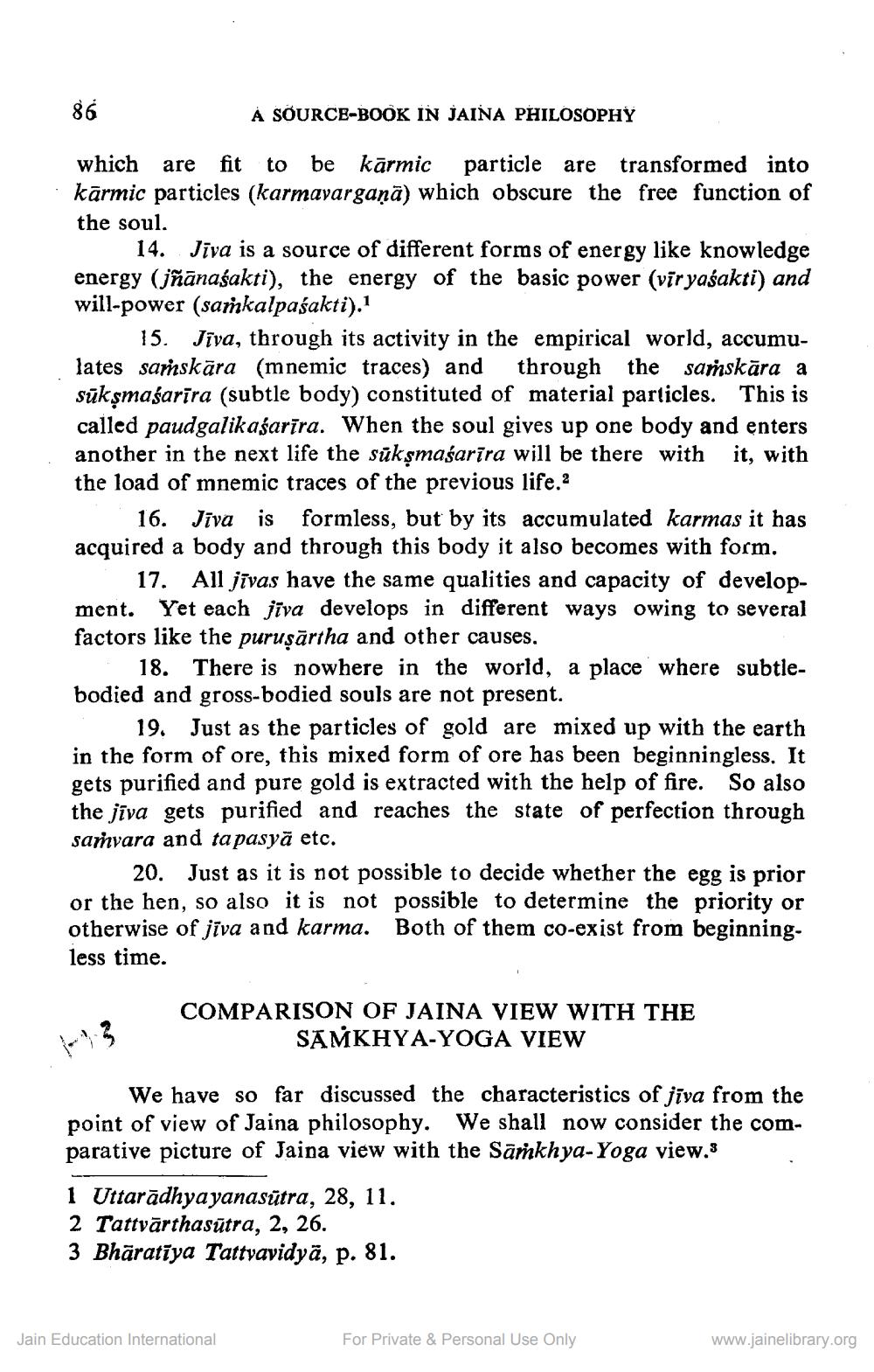________________
86
À SOURCE-BOOK IN JAINA PHILOSOPHY
which are fit to be kārmic particle are transformed into kārmic particles (karmavargaņā) which obscure the free function of the soul.
14. Jīva is a source of different forms of energy like knowledge energy (jñānasakti), the energy of the basic power (vīryasakti) and will-power (saṁkalpaśakti).
15. Jīva, through its activity in the empirical world, accumulates sarskāra (mnemic traces) and through the saṁskāra a sūksmaśarīra (subtle body) constituted of material particles. This is called paudgalikasarīra. When the soul gives up one body and enters another in the next life the sūksmaśarīra will be there with it, with the load of mnemic traces of the previous life.?
16. Jīva is formless, but by its accumulated karmas it has acquired a body and through this body it also becomes with form.
17. All jīvas have the same qualities and capacity of development. Yet each jīva develops in different ways owing to several factors like the puruşārtha and other causes.
18. There is nowhere in the world, a place where subtlebodied and gross-bodied souls are not present.
19. Just as the particles of gold are mixed up with the earth in the form of ore, this mixed form of ore has been beginningless. It gets purified and pure gold is extracted with the help of fire. So also the jīva gets purified and reaches the state of perfection through sarvara and ta pasyā etc.
20. Just as it is not possible to decide whether the egg is prior or the hen, so also it is not possible to determine the priority or otherwise of jīva and karma. Both of them co-exist from beginning. less time.
COMPARISON OF JAINA VIEW WITH THE
SAMKHYA-YOGA VIEW
We have so far discussed the characteristics of jīva from the point of view of Jaina philosophy. We shall now consider the comparative picture of Jaina view with the Sāṁkhya-Yoga view.s
1 Uttarādhyayanasūtra, 28, 11. 2 Tattvārthasūtra, 2, 26. 3 Bhāratīya Tattvavidyā, p. 81.
Jain Education International
For Private & Personal Use Only
www.jainelibrary.org




